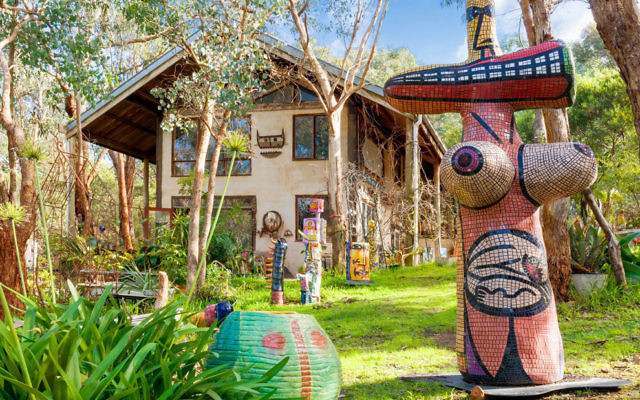Lifetime of art
Celebrated Australian sculptor Deborah Halpern is auctioning off more than 500 artworks from her collection to make room in her studio for the next phase in her career.

FOR artist Deborah Halpern, it’s the sale of a lifetime that marks a turning point in her career.
About 250 of her ceramics, sculptures, paintings and prints will go under the hammer by Mossgreen Auctions in Melbourne on September 25.
A similar number of artworks from her collection – by artists that she has admired such as Arthur Boyd, John Perceval, Reg Mombassa, Inge King, Mirka Mora and Louis Kahan – will also be sold.
The 59-year-old artist who lives in Warrandyte, a rural suburb 25 kilometres north of Melbourne’s CBD, says: “There’s a mixture of excitement and nostalgia with the auction, but I know they will be moving on to people who will appreciate them.
“I’m looking to the next stage of my creative work, so I wanted to clear some space for myself for a new future.”
The auction is somewhat of a family affair with artworks by her parents, Arthur and Sylvia, her uncle Stacha and photos taken by her son Artek Halpern-Laurence also on offer.
Halpern’s Jewish father, Arthur, was born in Poland and came to Australia after World War II, while her mother, Sylvia, was born in Japan from an Anglo-Saxon heritage.
“My father so loved Australia because it was a safe place to live after the war and a country filled with opportunities,” she says.
Halpern was born in 1957 and the family later settled in Warrandyte.
One of Halpern’s earliest works being auctioned is House of the Rising Sun earthenware from her first exhibition in 1978 at Potters Cottage Gallery.
“It was an amazing experience for me as a young artist to be exhibiting with my mother, who had invited me to join her in the exhibition,” Halpern recalls.
Halpern’s big break came when she was invited to create a sculpture for the National Gallery of Victoria as part of Australia’s bicentenary celebrations in 1988.
She received a grant for $25,000, but it became a much bigger project, taking three years, and she had to raise extra funds herself in an era before crowdfunding.
“The aim was to create an artwork of interest to younger people and those who were not so interested in the art world, to entice them into the gallery,” she explains.
“I knew that the grant would not cover what I wanted to do, but being young and a bit naive I jumped in and tried to swim like mad.
“I got really good support from sponsors and organisations such as the Myer Foundation, both with money and materials. At the time I had no idea that Angel was going to be so well received, but people loved her.”
The 10-metre sculpture Angel, comprising a steel skeleton with a skin of 4000 painted and glazed tiles, became one of Melbourne’s iconic pieces of public art, situated in the moat outside the gallery in St Kilda Road for many years. In 2006 it moved to its current location on the banks of the Yarra River at Birrarung Marr.
Among the works for sale is a signed painting by legendary singer Bob Dylan titled Horse that he painted in 2010, which is expected to sell for more than $1500.
“Bob Dylan had a big influence in my life and I loved having his painting hanging on the wall, but you can’t keep it all.”
Halpern’s work has been exhibited in galleries around the world, including Jewish museums, and public spaces.
“It’s amazing to see all these works together in an exhibition rather than scattered around my garden and studio in Warrandyte,” she says, comparing the auction to a retrospective exhibition.
“It feels like this is my life on display,” she says.
The Deborah Halpern Collection will be auctioned at Mossgreen Auctions, 926 High St, Armadale on September 25 at noon. Enquiries: www.mossgreen.com.au.
REPORT by Danny Gocs

comments